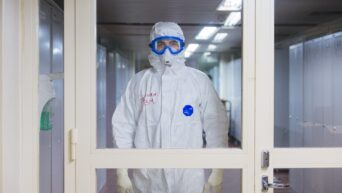
Credit: Unsplash
A special process restored a frog’s lost legs.
An animal’s limbs are its lifelines; without them, a creature’s ability to simply go about its life is severely impacted, and that’s assuming they aren’t immediately gobbled up by an enterprising predator. Some creatures are extremely fortunate, then, that they have the ability to regrow lost limbs, and if scientists can crack exactly how that process works, it could be a monumental discovery for medical science.
A team of scientists from Tufts University and Harvard University have made a big step toward that goal by successfully inducing limb regeneration in a common frog. Normally, frog limbs function in the same way as human limbs, scarring over when severed to protect the body from infection. However, by utilizing a special concoction of several key compounds, the scientists were able to regrow a frog’s amputated limbs.
Here’s how it works: the scientists created a special silicon cap that contains inflammation-battling drugs, muscle-building protein, and drugs that stimulate blood vessels, muscle fibers, and nerve fibers. This cap was placed on the amputation point for 24-hours.
“Using the BioDome cap in the first 24 hours helps mimic an amniotic-like environment which, along with the right drugs, allows the rebuilding process to proceed without the interference of scar tissue,” David Kaplan, professor engineering at Tufts and co-author of the study, said in a press release.
After that first day, the frog was monitored over the course of 18 months. Sure enough, the limb regrew almost entirely, and even regained most of its functionality. The limb featured functional internal tissues, and even an organic structure mimicking bones. Of course, this only works on frogs due to their amphibious nature. The team will need to refine the cap further if they hope to stimulate the growth of bones and proper toes. Even so, this is a great step.
“The fact that it required only a brief exposure to the drugs to set in motion a months-long regeneration process suggests that frogs and perhaps other animals may have dormant regenerative capabilities that can be triggered into action,” said Nirosha Murugan, researcher at the Allen Discovery Center at Tufts and lead author of the study.
































